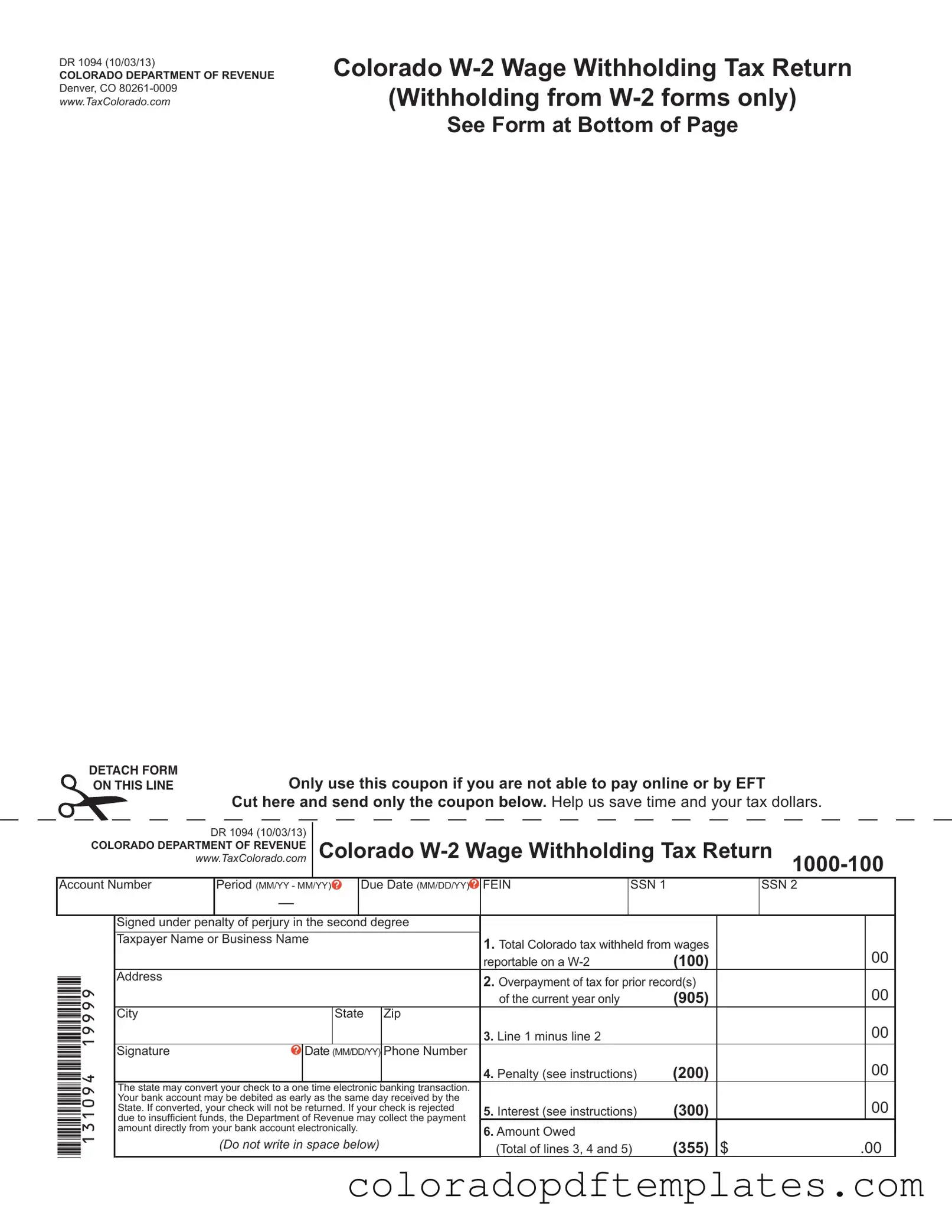What is the Colorado W-2 Wage Withholding Tax Return (DR 1094)?
The Colorado W-2 Wage Withholding Tax Return, also known as DR 1094, is a form used by employers to report the amount of state income tax withheld from employee wages. This form is specifically for reporting withholding from W-2 forms. Employers must complete and submit this form to the Colorado Department of Revenue to comply with state tax regulations.
Employers who withhold Colorado state income tax from employee wages are required to file the DR 1094 form. This includes businesses of all sizes, as long as they have employees subject to Colorado income tax withholding. If no taxes were withheld during a specific filing period, employers must still file a zero return to avoid being billed by the Department of Revenue.
To complete the DR 1094 form, follow these steps:
-
Enter your Colorado business account number.
-
Specify the filing period for the return.
-
Report the total Colorado income tax withheld from wages on line 1.
-
If applicable, report any overpayment from previous periods on line 2.
-
Calculate the net amount due by subtracting line 2 from line 1 for line 3.
-
If filing late, calculate any penalties and interest as instructed and report them on lines 4 and 5.
-
Finally, sum lines 3, 4, and 5 to determine the total amount owed on line 6.
What should I do if I overpaid taxes?
If you discover that you overpaid taxes for a specific period, you can take a credit on a future return within the same calendar year. To claim this credit, deduct the overpayment from line 1 of your next DR 1094 form. If you are unable to claim the credit within the calendar year, you should file for a refund using the Annual Transmittal of State W-2 Forms (DR 1093).
What are the penalties for late filing?
Filing the DR 1094 form after the due date may result in penalties. If the return is filed within the first month after the due date, the penalty is 5% of the tax due or $5, whichever is greater. For each additional month the return is delinquent, an additional half of 1% will be added, up to a maximum penalty of 12% of the total tax due.
How can I pay the taxes owed?
Employers can pay the taxes owed through various methods. Payments can be made online via the Revenue Online portal using an e-check or credit card. Alternatively, employers may choose to enroll in Electronic Funds Transfer (EFT) for automatic payments. If filing a paper DR 1094, checks or money orders should be made payable to the Colorado Department of Revenue and mailed to the specified address.
